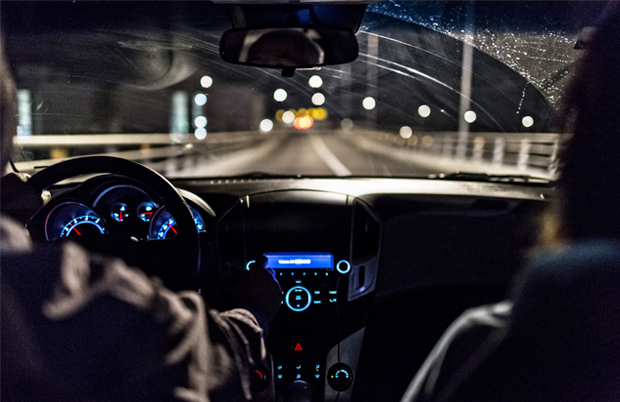
Anyone who has driven at night knows how dark or poorly lit roads can create a unique challenge. In complete darkness, even your high beams will only illuminate 100 to 150 metres ahead, and it takes over 60 metres to stop when travelling at 100 km/hour1. So, drivers are at a disadvantage in the dark. We’ve provided some steps you can take to make driving at night safer.
Here are our 9 nighttime driving safety tips:
1. Try to look bright.
Have your mechanic check whether your headlights are aimed correctly and always keep them free of bugs and grime so the beam can project further. On older cars, plastic headlight covers may need to be replaced or polished to restore their clarity. And don’t overlook your taillights. If they are not functioning properly or are covered in dust or snow, the drivers coming from behind may not see you until it’s too late.
2. Know when to turn on your high beams.
Where there are streetlights, high beams shouldn’t be needed, and they should never be used if there is a chance of blinding the oncoming traffic. During inclement weather, such as heavy snowfall, or even torrential rain, your high beams can reflect a distracting glare back at you, so low beams or fog lights are a far better choice.
3. Wear the correct corrective lenses.
Which glasses are best for nighttime driving? If you wear prescription glasses, make sure to get an anti-reflective coating that stops annoying reflections from bouncing around inside the lenses1.
4. Avoid glare while driving at night.
Your windshield may look practically invisible in the sunlight but, after sunset, every smudge and smear can create glare. Microfiber cloths work well to improve the view, but another quick solution is to wipe the inside glass with a balled-up newspaper.
5. Shift your focus.
To help avoid eye fatigue when driving at night, move your eyes from side to side across your field of vision instead of focusing on one spot. And instead of staring into the blinding lights of oncoming traffic, try looking slightly up and to the right.
6. Make adjustments.
Your rear-view mirror should be switched to a “dim” or “night” setting so the headlights of cars behind you don’t reflect directly into your eyes. Your side mirrors should also be tilted slightly down to avoid the same problem.
7. Reduce distractions inside your car.
Dashboard lights and infotainment screens are essential, but don’t let them catch your attention when driving at night. Find out how to dim all the interior lighting before hitting the road so it doesn’t cause distractions or reflections in the cabin. And if using your mobile phone while driving during the day is dangerous (which it is), just imagine how disastrous it could be to glance at that bright screen while driving in the dark.
8. Stay awake. Stay alert.
It’s important to stay alert when driving at night. Of course, taking a break for a beverage that contains caffeine helps. Listening to a radio show or your favourite music also work well, as does fresh air blowing on your face. But once your eyes become fatigued and your eyelids start to droop, it’s time to stop and rest.
9. Like a deer in the headlights.
Often the retinas of an animal’s eyes shine brightly in the dark, which can help give you a warning to slow down. It’s always better to brake than to swerve when avoiding an animal, as their actions are unpredictable.
According to the National Highway Traffic Safety Administration1, three times as many road fatalities occur at night as during the day. But the reality is, most of us need to drive at night occasionally. Therefore, the darkness shouldn’t be feared, just respected.
By taking a few precautions, you can keep your insurance premiums from being affected by a nighttime driving incident. Visit our auto insurance page for more information.
This article is courtesy of Servus Insurance Services | Home and Auto and is provided for your general information only.
Nothing on this site alters the terms or conditions of any insurance policy. Read your policy for a complete description of coverage and contact your insurance provider for coverage and policy details. Policy wording prevails.

